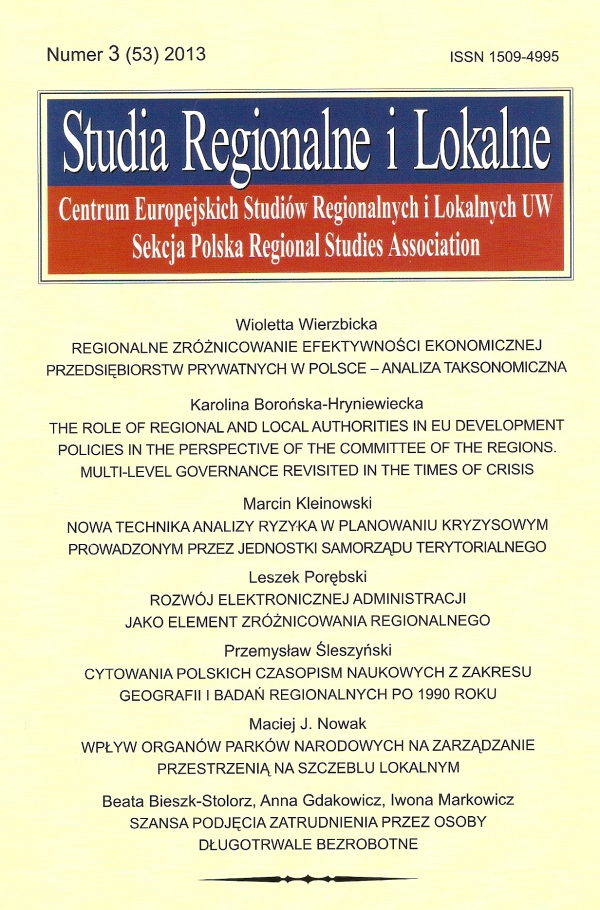Issue:
3(53)/2013
Beata Bieszk-Stolorz, Anna Gdakowicz, Iwona Markowicz
The odds of finding a job by the long-term unemployed
DOI: 10.7366/1509499535307
Szansa podjęcia zatrudnienia przez osoby długotrwale bezrobotne
Celem artykułu była analiza szans podjęcia pracy i ocena czasu wychodzenia z długotrwałego bezrobocia na podstawie danych z lat 2007–2011 z PUP w Sulęcinie. Założono hipotezę, że wpływ determinant na szanse i szybkość podejmowania pracy przez długotrwale bezrobotnych jest taki, jak bezrobotnych ogółem. Za determinanty przejęto: miejsce zamieszkania, wiek, wykształcenie, płeć, staż pracy i rok wyrejestrowania. Do analizy wykorzystano nieliniowe modele regresji: logitowy i hazardu Coxa. Pierwszy umożliwił porównanie szans wychodzenia z bezrobocia, a drugi pozwolił na ocenę czasu poszukiwania pracy. Wyznaczone ilorazy szans i hazardu posłużyły do zbadania różnic między podgrupami osób długotrwale bezrobotnych na tle wszystkich bezrobotnych.
The odds of finding a job by the long-term unemployed
The aim of this article is to analyze the odds to find a job and the assessment of the duration of long-term unemployment. The data base is the 2007–2011 records from the Local Labour Office in Sulęcin. The authors of the article make the hypothesis that the impact of the determinants on the odds and rate of finding a job by the long-term unemployed is the same as in the case of the all the unemployed. The authors present a thesis that the determinants of long-term unemployment in the period of study are: the place of residence, age, the level of education, gender, seniority and the year of leaving the register. To analyze the data they use such nonlinear regression models as: the logistic model and the Cox hazard model. The former enables them to compare the odds to leave unemployment and the latter – to assess the time spent on finding employment. The designated odds ratios and hazard ratios are used to study the differences between subgroups of individual characteristics of the long-term unemployed as compared with all the unemployed.
Affiliation:
Beata Bieszk-Stolorz: Katedra Ekonometrii i Statystyki, Wydział Nauk Ekonomicznych i Zarządzania, Uniwersytet
Szczeciński, ul. Mickiewicza 64, 71-101 Szczecin;
stolorz@interia.pl Anna Gdakowicz: Katedra Ekonometrii i Statystyki, Wydział Nauk Ekonomicznych i Zarządzania, Uniwersytet
Szczeciński, ul. Mickiewicza 64, 71-101 Szczecin;
alatko@wneiz.pl Iwona Markowicz: Katedra Ekonometrii i Statystyki, Wydział Nauk Ekonomicznych i Zarządzania, Uniwersytet
Szczeciński, ul. Mickiewicza 64, 71-101 Szczecin;
iwona.markowicz.us@wp.pl 


